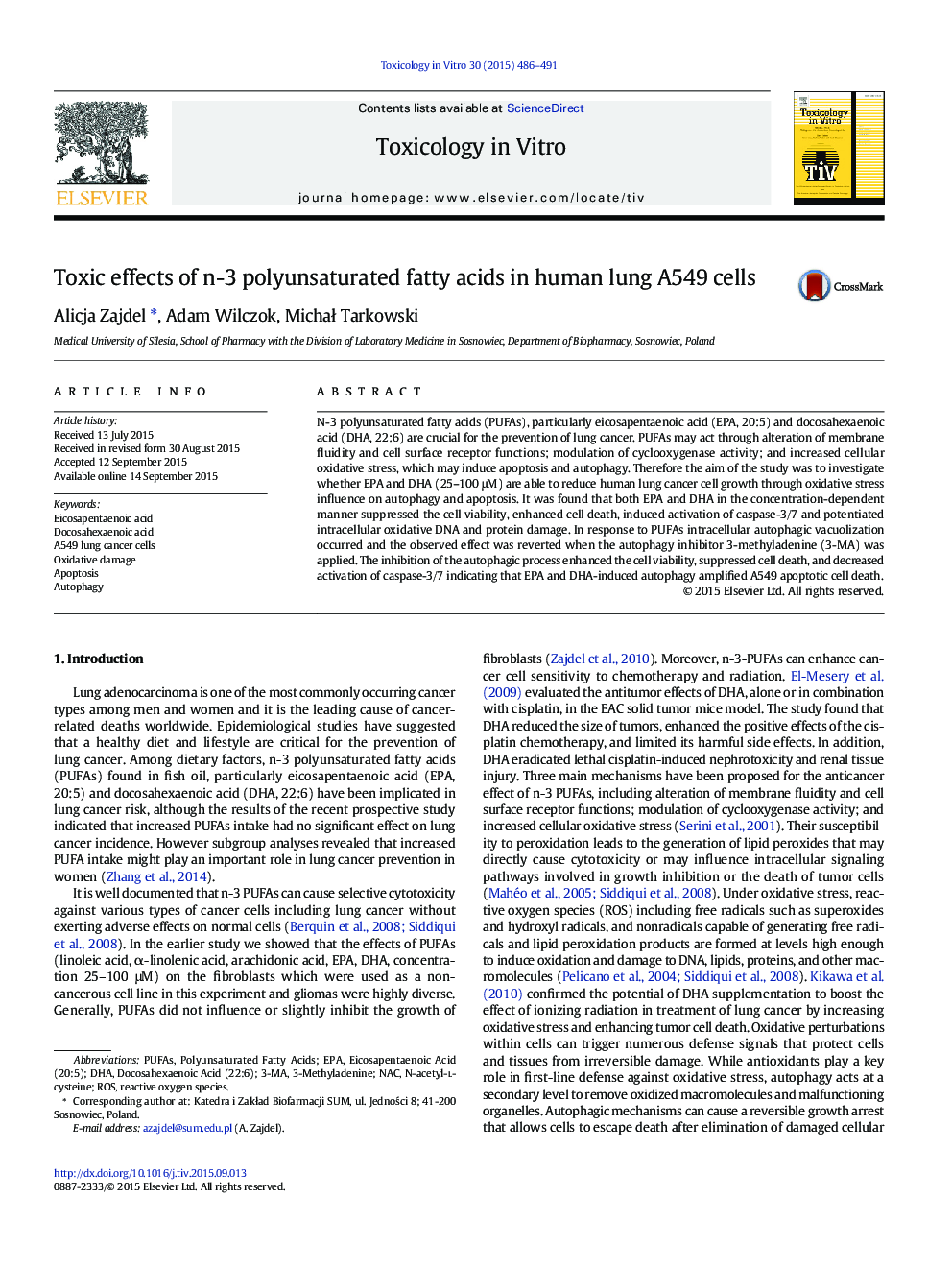| Article ID | Journal | Published Year | Pages | File Type |
|---|---|---|---|---|
| 2602431 | Toxicology in Vitro | 2015 | 6 Pages |
•Toxicity of EPA and DHA towards A549 cells is associated with oxidative damage.•EPA and DHA induce concentration-dependent apoptosis and autophagy in A549 cells.•EPA and DHA-induced autophagy amplifies A549 apoptotic cell death.
N-3 polyunsaturated fatty acids (PUFAs), particularly eicosapentaenoic acid (EPA, 20:5) and docosahexaenoic acid (DHA, 22:6) are crucial for the prevention of lung cancer. PUFAs may act through alteration of membrane fluidity and cell surface receptor functions; modulation of cyclooxygenase activity; and increased cellular oxidative stress, which may induce apoptosis and autophagy. Therefore the aim of the study was to investigate whether EPA and DHA (25–100 μM) are able to reduce human lung cancer cell growth through oxidative stress influence on autophagy and apoptosis. It was found that both EPA and DHA in the concentration-dependent manner suppressed the cell viability, enhanced cell death, induced activation of caspase-3/7 and potentiated intracellular oxidative DNA and protein damage. In response to PUFAs intracellular autophagic vacuolization occurred and the observed effect was reverted when the autophagy inhibitor 3-methyladenine (3-MA) was applied. The inhibition of the autophagic process enhanced the cell viability, suppressed cell death, and decreased activation of caspase-3/7 indicating that EPA and DHA-induced autophagy amplified A549 apoptotic cell death.
